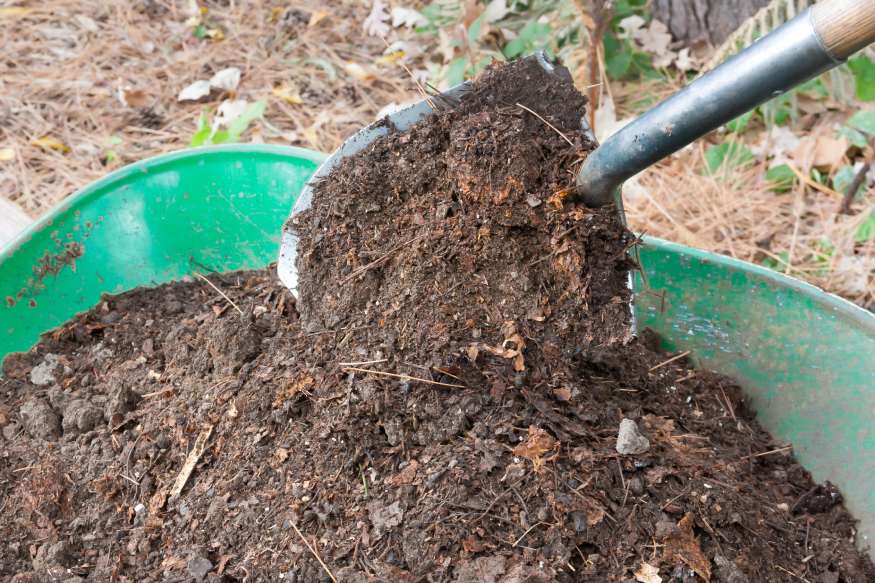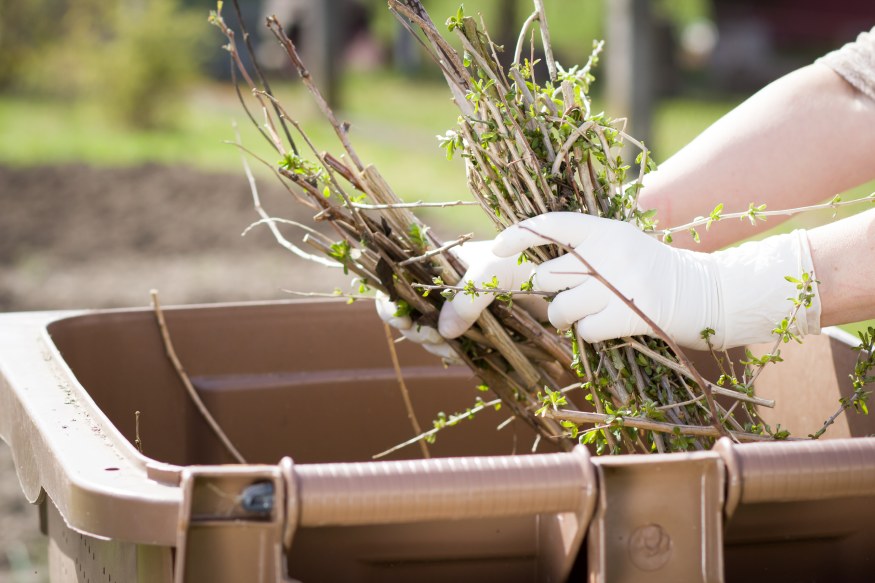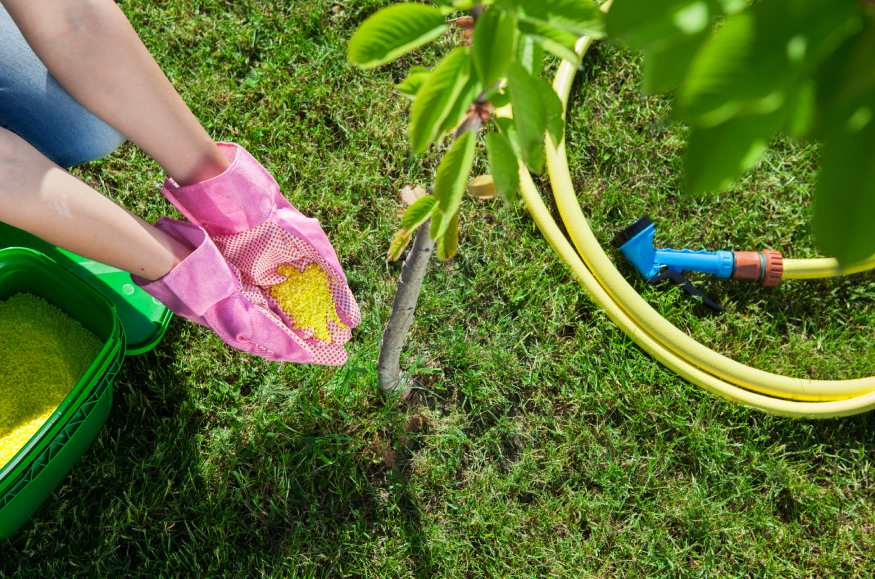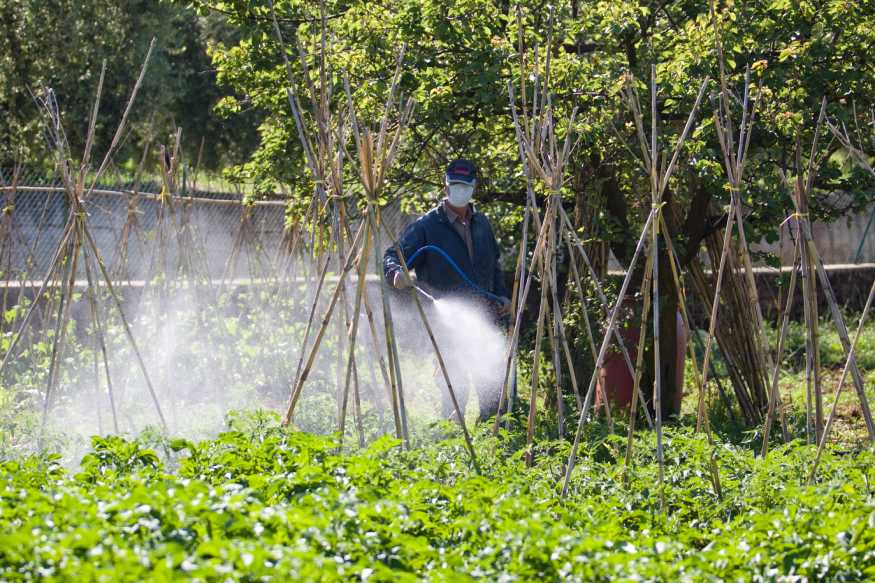Compost and fertilizer are two categories of products you can use to grow healthier, heartier plants. They share a common function, but compost and fertilizer are not the same.
Some people categorize compost as a type of organic fertilizer, and they aren’t entirely wrong. It is true that compost is organic, and it fertilizes.
However, compost has various benefits for the soil (such as improving the soil structure and moisture retention) not shared by other fertilizers. Moreover, compost avoids the wide range of environmental harms commonly caused by synthetic fertilizers (and occasionally caused by overuse of non-compost organic fertilizers).
Understanding the differences between compost (which feeds your soil) and fertilizers (which feed your plants directly) will help you grow better produce, flowers, and turf.
What Is The Difference Between Compost and Fertilizer?
The table below gives a very quick summary of the differences. For more detail keep reading below the table for the full article.
| Aspect | Compost | Fertilizer |
|---|---|---|
| Nature | Organic matter, decomposed. | Organic or inorganic nutrients. |
| Primary Function | Improves soil health; indirectly feeds plants. | Directly feeds plants with nutrients. |
| Nutrient Release | Slow, long-term benefits. | Quick, immediate impact. |
| Soil Impact | Enhances structure, moisture, and microorganism health. | Mainly nutrient supply, less soil improvement. |
| Environmental Impact | Eco-friendly, promotes natural processes. | Risk of pollution, especially with synthetics. |
| Cost & Accessibility | Can be homemade or purchased; may be costly in bulk. | Widely available, varied cost. |
Compost
Pros
- Good for beneficial microorganisms and earthworms
- Improves soil structure
- Helps soil retain moisture
- Can be used as a weed-suppressing mulch
- You can make it yourself
- Free if you make it yourself
- Slow release, so it works for longer
- Contains more essential nutrients than the basic NPK (nitrogen, phosphorus, and potassium) trio
Cons
- Expensive in large quantities
- Time and effort are required to make your own
- Including meat or dairy products in your pile can attract pests
- Slow release, so its immediate effect on plant growth is limited
- Exact NPK ratios are unknown
What Is Compost?

Compost is decomposed organic matter. No, not organic like the government-certified “organically grown” grapes at your grocery store. Everything that exists (in your garden and in the universe) can be broken down into the categories of organic and inorganic matter:
- Organic matter: stuff that is alive or was once alive (includes all plants, animals, and fungi, and their decomposed remains)
- Inorganic matter: stuff that contains no carbon-hydrogen bonds (includes salts, minerals, and metals)
All organic matter lives, dies, and decomposes, and the product of that decomposition is compost. It can be confusing that compost looks just like “dirt” or “soil,” but the three are actually different substances:
- Soil: A living ecosystem made up of organic matter, inorganic matter, and living organisms
- Dirt: Soil that is “dead” and not capable of supporting life
- Compost: Organic matter that feeds soil ecosystems
Compost can be purchased or made at home from many types of organic matter (although some ingredients work better than others). Many people start by composting their yard waste, but food scraps and aged animal manure are also common types of compost used in gardening.
What Is Compost Used For?
In farms and gardens, compost is used both as a mulch and as a soil amendment. It serves many functions:
- Compost feeds the soil. Compost is the perfect food for the worms, insects, and beneficial microorganisms that create a healthy ecosystem in your soil. That ecosystem ensures that your soil is full of the air, water, and nutrients your plants need to thrive.
- Compost feeds your plants. In general, compost has a relatively balanced ratio of the big three nutrients in fertilizer (nitrogen, phosphorus, and potassium). However, it is less concentrated than chemical fertilizers.
- Compost provides a full spectrum of nutrients. In addition to NPK, compost adds many secondary nutrients (such as calcium, magnesium, and sulphur) and micro-nutrients (such as boron, iron, and copper) that plants need to grow and fruit.
- Compost improves soil structure. Organic matter and the worms and microorganisms it attracts improve soil structure that contains too much inorganic matter (clay or sand). It also improves drainage (slowing it in sandy soil or speeding it in clay soil).
- Compost mulch suppresses weeds. Compost reduces weed growth substantially, reducing your garden’s maintenance needs.
- Compost mulch improves soil moisture. By reducing evaporation, compost mulch ensures your garden thrives with less irrigation.
- Compost mulch insulates the soil. Compost helps trap energy from the sun, providing warmth to plants overnight and improving their growth rates.
You can use compost to fertilize all plants, from tomatoes to turf to indoor potted plants.
Environmental Impacts
Composting is a natural process. Leaves fall from the trees, decompose, and create compost that feeds the tree. When gardeners compost, they simulate this natural cycle.
There are no risks of environmental pollution from properly-made compost. And, as long as you don’t add toxic materials to your compost pile, your compost is safe for the environment.
How To Make Your Own Compost

Basic composting is extremely simple. You can add bells and whistles, but the leaves decomposing under a tree don’t need them, and neither do you.
To make compost, you need five essential ingredients:
- Carbon-rich “brown materials”: Add carbon to your pile by including dry leaves, straw, grass, and plain paper/cardboard.
- Nitrogen-rich “green materials”: Add nitrogen to your pile by including fresh grass clippings, fruit and vegetable waste, coffee grounds, or manure.
- Air: Aerate your compost pile by “turning it” (mixing it up) with a pitchfork twice a month or so.
- Water: Depending on your region and the season, you may get enough rainwater, but if not, just sprinkle it with a hose to keep it damp.
- Microorganisms: You don’t need to add these. Just make sure the other four elements are present, and they will invite themselves to the party.
If you want to take your compost game up a notch, you’ll want a hot compost pile. Hot compost piles are ideal because they compost faster, kill plant diseases, weed seeds, and other nasties, so you don’t add them back into your garden. Hot composting requires a little more attention to detail but is well within the capabilities of any gardener; just check out this guide.
Compost can be made in a pile or in a bin, the method remains the same. You can also make compost on your bench top with a device like the Lomi.
Fertilizer
Pros
- Available in a range of different NPK ratios
- Can target specific soil imbalances
- Easy to obtain at any garden store
- Fast release, so it has an immediate effect on plant growth
Cons
- Concentration means it is easy to overuse it
- Can “burn” or kill sensitive plants, especially seedlings
- Harmful to the environment
- Often lacks secondary nutrients and micro-nutrients necessary for plant growth
- Fast release, so it must be reapplied frequently
What Is Fertilizer?

Fertilizer is plant food, a substance that makes the soil more fertile (capable of supporting abundant vegetation). Fertilizer is a shortcut. Rather than feeding soil microorganisms, fertilizer provides nutrients in a direct and easily absorbable form by plants.
Fertilizer can be broken down into two types:
- Organic fertilizer: made of plant or animal byproducts, and
- Inorganic fertilizer: manufactured artificially from mineral and synthetic chemicals (otherwise known as synthetic fertilizer or chemical fertilizer).
Examples of commercially available organic fertilizers include:
- Animal-derived fertilizers (such as bone meal, blood meal, feather meal, or fish emulsion)
- Plant-derived fertilizers (such as alfalfa meal or corn gluten meal)
- Sea-derived fertilizers (such as green sand, seaweed, or liquid kelp)
- Mineral-derived fertilizers (such as rock phosphate)
- Earthworm castings (or “tea” made from them)
- Guano (such as bird or bat guano, or traditional forms of manure)
- Compost (or compost tea)
Inorganic fertilizers, in contrast, are commonly made from petroleum byproducts. These typically offer heavily concentrated NPK, particularly nitrogen, but may lack the other nutrients plants need, so specific supplementation of calcium and other nutrients may be required. They also contain heavy metal pollutants.
What Is Fertilizer Used For?
Fertilizer feeds plants. That’s what it does, and (unless in the form of compost) that’s pretty much all it does. Some people say there is no difference between organic and inorganic fertilizers because plants don’t know if they’re consuming nitrogen introduced to the soil via a chemical fertilizer, corn gluten meal, or decomposed leaves. That is true, in a way, but it isn’t that simple.
Note: Plants can only absorb nutrients once the nutrients are broken down into their basic form, not in the form of organic compounds (such as dead but uncomposted leaves).
Soil microbes and fungi help break organic compounds down into a form plants can absorb. Chemical fertilizers, in contrast, are already in an absorbable form. That is why chemical fertilizers are considered “fast release,” while compost and organic fertilizers work by improving the soil over a more extended period.
For example, some gardeners recommend putting broken eggshells in the hole to give them a calcium boost. This makes little sense because the eggshells will not break down into absorbable calcium during the lifecycle of that tomato plant. (Putting broken eggshells in your compost pile, in contrast, gives them a head-start at decomposition, and the calcium in your finished compost will feed your tomatoes.)
Environmental Impacts

Given how inexpensive and easy it is to buy chemical fertilizer and how quickly it works, it is understandable that it has been a crutch for gardeners and landscapers for generations. However, the research on the environmental impact of inorganic fertilizer is damning.
Info: While the concentration of chemical fertilizers is advertised as a benefit, it is a massive problem when it comes to pollution of the water, soil, and air.
For example, over-fertilization plus rainwater or irrigation produces a nutrient-dense runoff that ends up in our water systems. One impact is nitrate and phosphate contamination of drinking water. Another impact is the growth of massive algae blooms in lakes and rivers.
The algae bloom die, decompose, and create oxygen-depleted “dead zones” in our waterways. Also, fish ingest the chemicals and either die off or become diseased, and the diseased fish become part of the human food chain.
Info: The polluting impacts of synthetic fertilizers aren’t just bad for fish and humans; they’re bad for your plants.
Synthetic fertilizers are addictive because they degrade your soil, so you need to add larger and larger amounts to get the same effect over time. They contain salts that build up in the ground, acidifying it. This kills beneficial microbes and forces earthworms to relocate. What’s more, excess nitrogen from the concentration of these products can turn plants yellow or even kill them outright. And even if they initially appear vigorous, they may have shallow roots and produce many leaves but no fruit.
That said, there are times fertilizer use is appropriate. Go for it, but only if you can answer Yes to all of the following questions:
- Is compost impossible to use for this purpose? For example, would it be cost-prohibitive to spread it over such a large area, or does the soil have one specific and extreme deficiency?
- Do I know my soil’s specific nutrient deficiencies? If not, you can easily send a soil sample to an Extension Office-affiliated lab listed here. For a surprisingly low fee, they will give you a detailed analysis of your soil’s quality, contents, and deficiencies and make recommendations for correcting those deficiencies based on what you want to grow.
- Have I chosen an organic fertilizer that will address my soil’s specific deficiencies? Our guide to organic lawn fertilizers is an excellent place to start. There are organic fertilizers available to address any deficiency in your landscape or garden.
- Do I know how to apply the correct amount of that fertilizer? That includes not only learning how much to use (read the package, take measurements, and do the math, it’s essential), but what tools will help you apply it evenly and how often to reapply it.
Final (Plant) Food for Thought
While there are some situations when judicious use of organic fertilizer may be appropriate, you will generally have better results when you feed your soil, not just your plants. It takes a village (of beneficial microorganisms working together in a harmonious ecosystem) to raise a happy, healthy plant. Support your soil community with compost whenever possible.